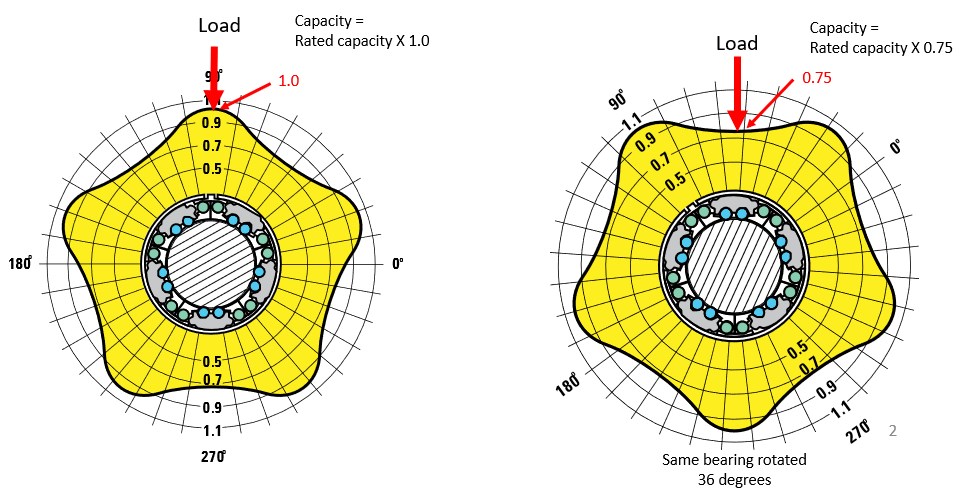Design and Theory
In RoundRail linear bearings, the load capacity changes when the bearing is rotated around the shaft relative to the load. The published Dynamic load capacity of a Thomson Ball Bushing Bearing is only valid when used in the optimal orientation. Loading at an orientation other than the optimal orientation will require de-rating the load capacity.
If we graph the load capacity of the Ball Bushing® bearing vs the orientation to the ball tracks, we end up with a graph like below.
The image on the
left shows the load pressing between the two bearing plates. In this
case, the load will be shared by two bearing plates. This orientation is
the optimal orientation and where the bearing can carry its maximum load.
The image on the right, the bearing has been rotated and the load
is applied directly over one of bearing plates. In this situation, the
load is riding mostly on the one bearing plate. This orientation is
where the bearing is at its lowest capacity.



